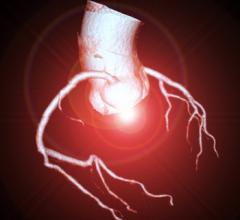
FDA Clears Siemens Somatom Force CT System
May 21, 2014 — The U.S. Food and Drug Administration (FDA) cleared Siemens Healthcare's Somatom Force computed tomography (CT) system, its next generation in dual-source CT. With two sets of Siemens’ X-ray tubes and detectors, the Somatom Force extends advanced imaging to all patients, including some of the most challenging: young children, patients with renal insufficiency and patients who are unable to hold their breath. The Somatom Force overcomes imaging limitations, making low-dose CT available for an even broader array of patients. With the power reserves of its Vectron tube, the Somatom Force delivers routine adult imaging with fast, low-dose protocols.
Kidney-friendly Scanning
For years, CT imagers have been investigating the usage of different energy levels (kilovoltage or “kV”) to elicit an enhanced contrast-to-noise ratio and lower patient radiation dose. Lowering kV levels also can potentially increase enhancement of contrast medium, so less contrast may be necessary. This practice had limitations because earlier generations of CT scanners could not sufficiently power imaging at very low kV levels except when imaging children or very small adults. In early investigational research with the Somatom Force, radiologists have observed low, previously unachievable kV imaging results that are enabled by the Force’s power reserves.¹
“The massively enhanced tube power of the Somatom Force enables imaging that can be acquired at very low kV settings — and thus at a lower level of radiation dose — routinely in adult patients and even those of a larger body type. In the past, these low kV settings would have resulted in noisy, nondiagnostic studies,” said Joseph Schoepf, M.D., director of CT research and development and professor of radiology and cardiology at Medical University of South Carolina.
Due to its low kV imaging, the Somatom Force broadens CT’s application for patients with renal insufficiency. While necessary for conventional CT imaging, iodine contrast medium can place a burden on the kidneys, especially for older patients or those with chronic kidney disease. Previously, clinicians had two options: scan without contrast or avoid scanning entirely. The Somatom Force extends CT’s use for these patients, especially in urgent situations when they can most benefit.
An author of numerous published studies on the benefits of low kV imaging and an internationally recognized expert in neuroradiology, Lawrence Tanenbaum, M.D., FACR, noted, "The Somatom Force enables routine 70 kV imaging — a technique poised to make a tremendous impact in day-to-day scanning of adult and pediatric patients, with benefits such as decreased radiation dose and impressive time-resolved imaging."
Freezing Motion
With the industry’s fastest, most versatile scanning mode, the Somatom Force enables the user to perform an entire adult chest, abdomen and pelvis study in only one second, so patients need not hold their breath. For example, patients who present with shortness of breath and are evaluated for pulmonary embolism can now be imaged with no breath hold, thanks to the Somatom Force’s Turbo Flash Mode. With no need for a patient breath hold, the healthcare organization can make faster, more confident decisions and can better deliver timely intervention. In cardiac imaging, the Somatom Force can obtain an entire study within a quarter of a heartbeat at a native temporal resolution of 66 ms — the speed required to freeze even the fastest-moving anatomy such as the right coronary artery.
Preventative Care
The Somatom Force also may enable low-dose imaging in lung and colon exams.² Low-dose imaging is attributable to two spectral filters known as Selective Photon Shields that optimize the X-ray spectrum to significantly improve air/soft-tissue contrast. Patients who are diagnosed with lung or colon cancer are likely to undergo additional follow-up imaging studies that can now be delivered at a continually low dose to enable more decisive treatment and post-therapy evaluations.
References:
1. With the low kV/high mA capabilities of the VECTRON tube, SOMATOM Force allows scanning with a very high tube current of up to 1300 mA at 70, 80 and 90 kV, such that a high tube output even for these low kV settings can be achieved. Along with SOMATOM Force’s unique Turbo Flash Mode, this scan configuration is also available for conventional spiral or sequential scanning.
2. The SOMATOM Force may achieve the same contrast-to-noise level (in terms of image pixel noise) in the image in reduced dose.
For more information: www.siemens.com/healthcare


 December 11, 2025
December 11, 2025 









